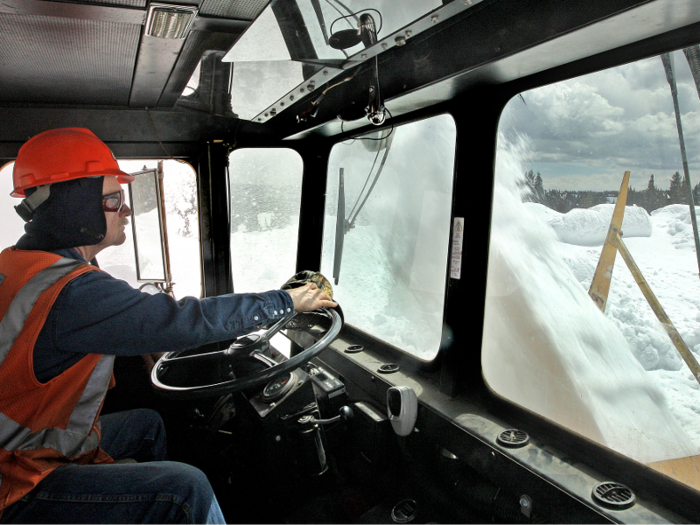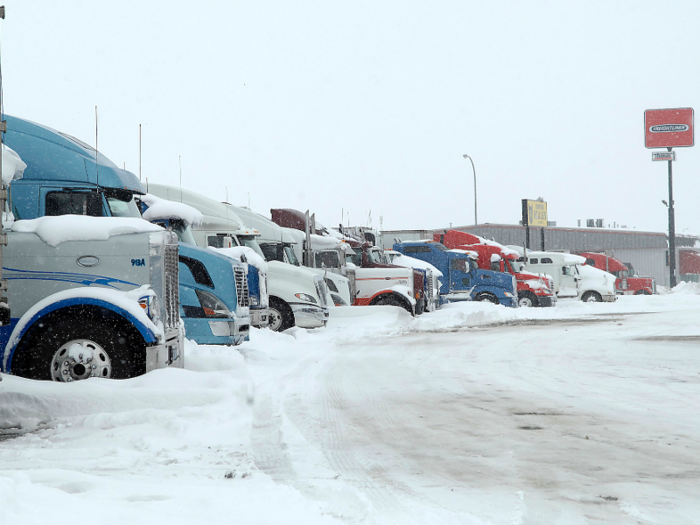- Home
- slideshows
- miscellaneous
- Truck drivers share the 7 most treacherous places to drive in the US
Truck drivers share the 7 most treacherous places to drive in the US
Colorado

Texas

Percent of overall vehicle fatalities that are truck drivers: 3.6%
"Texas is truck country, both in regular pickups and 18-wheelers. I seem to have a much easier time navigating most roads here because non-CDL (Commercial Driver's License) drivers are more aware of our needs.
"I almost never encounter a 'Texas-bred' pickup truck that is not super on-point about how we maneuver in traffic, and who makes room for us when the specific situation calls for it.
"I don't enjoy the flash flood warnings in rainy months or days, and I've seen enough news footage that I'm glad I have missed that 'dance' every time I drive through Texas when they occur." — Red Viking Trucker
Alabama

Percent of overall vehicle fatalities that are truck drivers: 3.6%
"I'm wondering if being a central state has anything to do with that, because drivers bringing freight on longer trips would be tired in the middle of the trip. Alabama would follow under that, because you are allowed 11 hours of driving, and Alabama would be a state that you could get to towards the end of that 11 hours from most of the major shipping cities and states.
"I must admit the real dangers I have found (in Alabama) would be the logging trucks. They will pull out in front of you from some dirt road with a load of logs hanging way back.
"There are a lot of logging trucks, especially in the center part of the state. Driving around Birmingham and Montgomery can be challenging." — Terry Wilson
Oklahoma

Percent of overall vehicle fatalities that are truck drivers: 4.6%
"Southwest cities, like Oklahoma City, are dangerous in the spring weather with the thunderstorms and tornadoes activity." — Rene Meneses, trucking since 1987
Nebraska

Percent of overall vehicle fatalities that are truck drivers: 5.9%
"In Nebraska, in my opinion, the most dangerous situation is the weather condition. High winds in wide open spaces (for example, Interstate 80 Omaha to Denver) could be the very worst. With an empty trailer, the wind can blow you off the road and it ends in a rollover.
Further the winter conditions on icy roads and high winds are very dangerous, too.
But, if the weather is fantastic, driving through Nebraska is a fabulous adventure. I personally like the wide open spaces, the landscape and sometimes lonely roads." — Joe Flege
Wyoming

Percent of overall vehicle fatalities that are truck drivers: 6.7%
"The winds especially near Elk Mountain, where the freeway turns diagonal, the wind often blows trucks over causing many accidents in the winter and the summer.
"From November all the way 'til May, it seems like, I-80 is closed most of the time because of snow, ice, and wind. Trucks can be waiting on the side of the road in a line as far as 10 miles waiting for the freeway to open. This can be as long as a few days and newer truck drivers don't know this and are not prepared, and quite often they do not have any food or places to go to the bathroom." — Jack S. Halquist
North Dakota

Percent of overall vehicle fatalities that are truck drivers: 8.8%
"North Dakota is a big place, but the only time I had problems was in the winter due to icy road conditions, coupled with the need to make good miles. The envelope was often stretched in terms of safety.
"Driving west to east in bad weather would often mean that your left side would be at minus 10 inside the truck, whilst the rest of you was warm. Then there was the blowing snow to contend with, which piled up in ridges, and whenever someone overtook you would have a 'whiteout' for many moments and the danger of losing control of the truck.
"Four-wheel drivers also caused many accidents in bad weather due to their inability to drive to the conditions, and they would often be crawling along at 20 miles per hour in conditions where you could drive faster, safer." — Mick Flynn
"Roads can be slippery, and big trucks can end up in ditches. Shoulders are often covered with snow, and they are hard to see.
"If a heavy truck goes on the shoulder, it can get pulled in the ditch. Also, small two-lane roads can have deep snow on them (when they are not plowed), and you can just get stuck. Modern highway trucks are not designed to 'off road.'
Last but not least, if the traffic stops suddenly, big trucks need more stopping distance on snowy/icy roads. Daylight is short, and you often have to drive after dark, when deer and moose like to stroll around." — Sergei Dratchev
Popular Right Now
Popular Keywords
Advertisement